#barley pilaf recipe
Photo
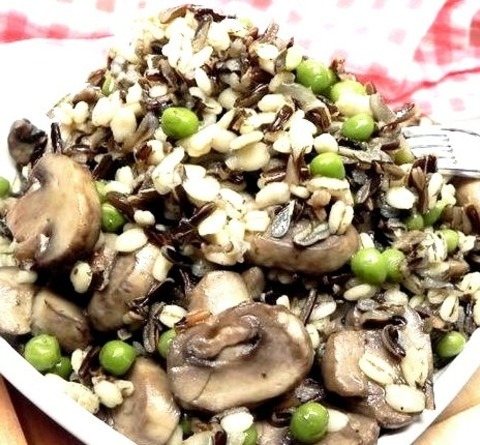
Instant Pot Wild Rice and Barley Pilaf
This hearty wild rice and barley pilaf can be quickly made in an Instant Pot® for busy weeknights. It pairs well with any pork or chicken main dish.
8 notes
·
View notes
Text
Grain Side Dish - Indian Curried Barley Pilaf

This is a delicious and savory Indian curried barley dish. It is fabulous as a main dish, or as a side dish with fish or grilled chicken breast. It is quite simple to make and sure to impress!
0 notes
Photo

Instant Pot Wild Rice and Barley Pilaf
Hearty, earthy, and a great side dish to any pork or chicken main, this wild rice and barley pilaf is easily prepared in an Instant Pot for busy weeknights. 1 pinch salt and ground black pepper to taste, 3/4 cup wild rice, 1 teaspoon dried dill weed, 1 small onion chopped, 1 package sliced fresh mushrooms, 3 cups chicken broth, 1 clove garlic minced, 1 tablespoon olive oil, 1/2 cup quick-cooking pearl barley, 1/2 teaspoon dried oregano, 1/2 cup frozen peas thawed
0 notes
Photo

Minted Barley Pilaf
Minted barley pilaf with carrot and onion is a flavorful side dish alternative to the traditional rice pilaf.
0 notes
Photo

Instant Pot Wild Rice and Barley Pilaf
This hearty wild rice and barley pilaf can be quickly made in an Instant Pot® for busy weeknights. It pairs well with any pork or chicken main dish.
0 notes
Photo

Side Dish - Green Peas - Instant Pot Wild Rice and Barley Pilaf
This hearty wild rice and barley pilaf can be quickly made in an Instant Pot® for busy weeknights. It pairs well with any pork or chicken main dish.
0 notes
Text
Tuna Rum Pilaf
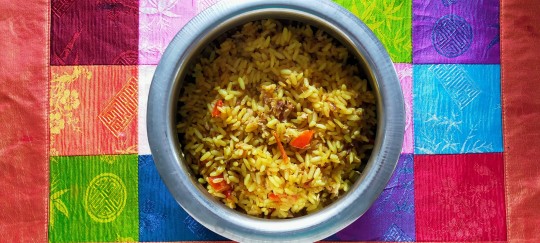
Last night’s episodes of Death in Paradise were served with a generous side of this delicious and fragrant Tuna Rum Pilaf and it’s so good, I might suggest to Catherine to add it to her menu!
Ingredients (serves 4 to 6):
2 tablespoons olive oil
1 teaspoon Graines à Roussir
1 small onion
1 thumb-sized piece fresh ginger
1 large garlic clove, minced
½ tablespoon Colombo spices
¼ teaspoon Red Chili Flakes
½ large red bell pepper
1 ½ cup long grain rice
1 teaspoon coarse sea salt
1 lime
1/3 cup Ginger and Lime Rum
3 cups water
3 tablespoons pure cane sugar
120 grams/4 ounces tinned tuna (kept in water)
Heat a large, deep, nonstick skillet over medium-high heat. Add olive oil. Add Graines à Roussir and fry, a minute.
Peel and finely chop onion, and add to the skillet. Cook, 2 minutes.
Peel and finely chop ginger. Stir into the skillet, and fry, 1 minute more.
Stir in minced garlic, Colombo spices and Red Chili Flakes. Cook, a couple of minutes more. Chop red bell pepper, and stir into the oil an spices. Cook, a couple of minutes.
Then, stir in the rice, coating well into the oil and spices, until translucent. Season with coarse sea salt.
Once the rice is well-coated and translucent, thoroughly squeeze in the juice of the lime. Add half of the Ginger and Lime Rum; then, the water, and give a good stir. Bring to the boil, then reduce heat to low. Cover with a lid, and simmer, about 20 to 25 minutes, until all liquid has been absorbed.
Stir in cane sugar, cook, a few minutes more.
Finally, thoroughly drain tuna, and flake it into the skillet. Stir in remaining Ginger and Lime Rum.
Serve Tuna Rum Pilaf hot.

*GIF not mine
#Recipe#Food#Tuna Rum Pilaf#Tuna Rum Pilaf recipe#Pilaf#Pilaf recipe#Pilaf Rice#brown rice#Rice Bulgur Barley and Wheat Berry#Tuna#Tinned Tuna#Fish and Seafood#Olive Oil#Graines à Roussir#Cumin#Coriander Seeds#Onion#Ginger#Garlic#Colombo Spices#Red Chili Flakes#Red Bell Pepper#Bell Pepper#Coarse Sea Salt#Rum#Flavoured Rum#Ginger and Lime Rum#Lime Juice#Fresh Lime Juice#Water
3 notes
·
View notes
Text
Mushroom and Barley Pilaf
1 tbs. butter
½ cup yellow onion, sm. dice
1 cup pearled barley
2.5 cups chicken stock
¾ cup button mushrooms, quartered
salt and pepper, to taste
Melt the butter in a saucepan and sauté onions and mushrooms till tender.
Add barley and saute for 2 minutes.
Add stock and bring to a boil, then cover and place in 350F oven until done, about 20 minutes.
Alternative step 3, simply bring the boil down a simmer, cover and let cook for 20 minutes until the barley’s absorbed all the stock.
Adjust seasoning with salt and pepper and serve hot.
#momo's super top secret but not secret recipe vault#side dishes: starched and pressed#mushroom and barley pilaf
0 notes
Text

Hey, fellow witches and magical souls! Today, let's delve into the nurturing embrace of the element of Earth and uncover its profound significance in the practice of witchcraft. 🌿✨
🌱 Elemental Correspondences: Earth is associated with the North direction, the season of winter, and the midnight hour. Its energy is stable, grounding, and deeply rooted in the physical realm. In the magical circle, Earth represents the manifestation of our intentions, abundance, and fertility.
🌿 Magical Properties: The element of Earth is rich with magical properties that enhance our spells and rituals. Here are some correspondences to incorporate into your practice:
Direction: North
Rules: Stability, foundation, manifestation
Time: Midnight
Season: Winter
Planets: Earth, Saturn
Zodiac: Taurus, Virgo, Capricorn
Crystals: Crystals such as green aventurine, moss agate, and hematite resonate with the energy of Earth, grounding and stabilizing our energy while promoting growth and abundance.
Herbs: Herbs like patchouli, sage, and cedar embody the essence of Earth, offering protection, purification, and grounding properties in our magical workings. [remember: white sage is endangered! and be mindful of other practices :D]
Symbols: Symbols associated with Earth include the pentacle and the Tree of Life, representing fertility, growth, and the interconnectedness of all living beings.
Colors: Earthy tones such as green, brown, and earthy reds symbolize the element of Earth and can be used in candles, altar decorations, and ritual attire to amplify its energy.
Ritual Tools: Tools such as the pentacle, salt, and stones are commonly used in Earth magic to ground and center our energy, create sacred space, and connect with the natural world.

🌎 Incorporating Earth Energy: To harness the power of Earth in your practice, spend time connecting with nature, whether it's through gardening, hiking, or simply taking a walk in the woods. Practice grounding exercises, such as visualizing roots extending from your body into the earth, to anchor yourself in the present moment and draw upon the stabilizing energy of the Earth element.
Some of the rituals and practices associated with the element are:
Grounding and Centering: Many earth magic rituals begin with grounding and centering techniques to connect with the Earth's energy and find stability.
Sacred Space Creation: Creating a sacred space, often through rituals like casting a circle, is common in earth magic to establish a connection with the natural world and create a protective boundary.
Offerings and Prayer: Offerings of herbs, grains, or other natural materials are made to the Earth or nature spirits as a way of giving thanks and seeking blessings.
Divination: Some practitioners of earth magic use divination methods such as scrying with natural materials like stones, water, or soil to gain insights and guidance
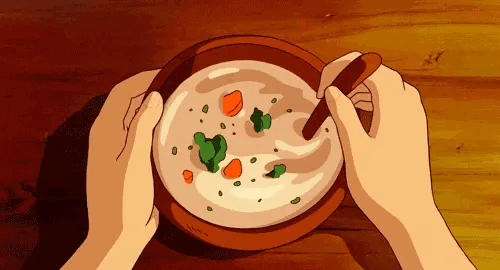
🌿 Manifesting Abundance: Earth magic is particularly potent for manifesting abundance and prosperity in our lives. Work with Earth correspondences in spells and rituals focused on financial abundance, career success, and material wealth, aligning your intentions with the fertile energy of the Earth to support your manifestations.
Related recipes with Earth are:
Root Vegetable Stew: A hearty stew made with root vegetables such as potatoes, carrots, parsnips, and turnips. Add onions, garlic, and herbs like thyme and rosemary for flavor. This dish symbolizes grounding and stability, as it features ingredients that grow beneath the earth's surface.
Whole Grain Pilaf: A pilaf made with a variety of whole grains such as brown rice, quinoa, barley, or farro. Cook the grains with broth, vegetables, and herbs like sage or parsley for added flavor. Whole grains are associated with fertility and abundance, making this dish a fitting representation of the Earth element.
Herb-infused Bread: Bake a loaf of homemade bread using whole grain flour and infuse it with earthy herbs like rosemary, oregano, or thyme. The process of kneading and shaping the dough can be a meditative practice, connecting you with the Earth's energy as you work with the ingredients.
Roasted Vegetable Medley: Toss a variety of seasonal vegetables such as squash, Brussels sprouts, cauliflower, and bell peppers with olive oil, salt, pepper, and herbs. Roast them in the oven until tender and caramelized. This dish celebrates the abundance of the harvest season and the earthy flavors of freshly harvested produce.
Herbal Tea Blend: Create a custom herbal tea blend using dried herbs such as chamomile, nettle, ginger, and licorice root. These herbs are associated with grounding, healing, and nourishment. Steep them in hot water to create a comforting and aromatic beverage that can be enjoyed throughout the day.
Harvest Salad: Combine mixed greens with roasted beets, carrots, walnuts, and goat cheese. Drizzle with a vinaigrette made from olive oil, balsamic vinegar, and Dijon mustard. This salad showcases the vibrant colors and flavors of the harvest season, while also incorporating ingredients that are deeply connected to the Earth.
Ethics and Guidelines:
Respect for Nature: Earth magic emphasizes respect for the Earth and all its inhabitants. Practitioners are encouraged to work in harmony with nature and avoid practices that harm the environment.
Responsibility: Practitioners of earth magic often adhere to the Wiccan Rede or similar ethical principles, which emphasize the importance of acting responsibly and avoiding harm to others.
Personal Empowerment: Earth magic is often seen as a path of personal empowerment, encouraging practitioners to connect with their inner wisdom and intuition while respecting the interconnectedness of all things.
🌿 Embrace the grounding energy of the Earth element, dear witches, and let its nurturing embrace guide you on your magical journey. May you find strength, stability, and abundance in the fertile soil of the Earth's embrace. 🌿🌎✨
Learn more:
Earth Magic by Dodie Graham McKay
This book explores various aspects of earth-based spirituality and magic, providing practical guidance for individuals interested in deepening their connection with the Earth. The book covers topics such as:
-> Foundations of Earth Magic: McKay lays the groundwork by discussing the significance of the Earth as a source of spiritual power and wisdom. She emphasizes the importance of cultivating a relationship with nature and honoring its cycles.
-> Elements and Correspondences: The book explores the elemental energies of Earth, Air, Fire, and Water, highlighting their correspondences and symbolic meanings in magical practice. McKay offers insights into how these elements can be invoked and utilized in rituals and spells.
-> Rituals and Practices: Earth Magic provides a variety of rituals, meditations, and exercises designed to deepen one's connection with the Earth and tap into its energies. These practices range from simple grounding techniques to elaborate ceremonies for honoring the seasons and natural cycles.
-> Herbalism and Plant Magic: McKay discusses the magical properties of herbs and plants, offering guidance on how to work with them in spellcraft, healing, and spiritual growth. She shares recipes for herbal remedies, incense, and potions, along with tips for cultivating a magical garden.
-> Divination and Earth Wisdom: The book explores divinatory practices such as scrying, rune casting, and earth-based tarot readings, showing how these methods can be used to gain insights and guidance from the natural world.
-> Ethics and Responsibility: Throughout the book, McKay emphasizes the importance of ethical conduct and responsible stewardship of the Earth. She encourages readers to approach magic with respect, integrity, and a commitment to environmental sustainability.
#queue the magick#witchcraft#witchblr#witch#reference#kitchen witch#magickkate#green witch#witchy#sigils#sea witch#witch aesthetic#witchy vibes#witches#baby witch#beginner witch#college witch#baby witch tips#college witch tips#cottage witch#witch blog#witch tips#witchcraft community#witches of tumblr#witchcore#witchcraft 101#witchtok#witchy shit#witch community#witchyvibes
41 notes
·
View notes
Note
Hello! I was wondering if you have any ideas for goatkin or bearkin? I haven't seen much stuff for them x-x
Abolutely!! I actually used to raise goats, so here's some stuff based on their feed and favorite treats.
Goat:
Alfalfa Bread
Multigrain Molasses Bread
Arugula Alfalfa Salad (Best paired with This dressing!)
Dutch Baby with Figs and Berries
Wild Green Soup
Cracked Rye Porridge with Molasses Roast Cherries
Veggie Barley Couscous
Roast Pumpkin
Crunchy Apple Salad
Stuffed Grape Leaves
Rice Pilaf with Grape Leaves
Fig Leaf Recipes
Buckwheat and Oat Pancakes with Birch Syrup
Bear:
Pan-Seared Salmon
Salmon Crudo
A TON of Mackerel Recipes
Honeycomb Candy
Appalachian Dandelions
Lion's Mane Mushrooms
A Bunch Of Bison Recipes
A Bunch Of Venison Recipes
Honey Mustard Glazed Salmon
Honey-Berry Cake
Apple-Honey Dutch Baby
Mulberry Muffins
Lemon Dewberry Muffins
Did you know Dewberries are also called Bear Berries?
Also I know a lot of folks are opposed to eating bugs, but that's a very common bear food.
If you're interested in trying some pretty non-threatening versions, there's Cricket Flour which works as a high protein flour for any recipe! If you wanna go all-in, there's also a bunch of flavors of Edible Bugs, usually fried or baked.
Hope this helps!!!
#weepingmoon-writes#weepingmoon#bearkin#goatkin#otherkin food#otherkin#recipes#therian#otherhearted#meat recipes#veggie recipes#grain recipes
16 notes
·
View notes
Text
Barley Atta: Exploring the Potential of a Dynamic Grain
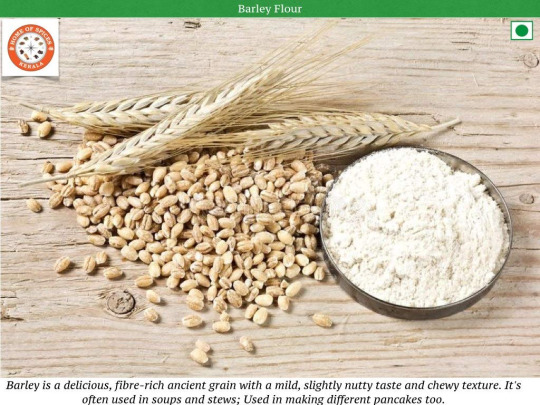
In today's world of cooking, where we're all trying to make healthier choices, it's important to explore different grains that can make our meals better. That's where barley comes in! It's not just a grain – it's a superfood packed with goodness. Let's take a closer look at barley atta and see how it can make our meals even more delicious and nutritious.
Discover Barley: A Timeless Grain with a Rich History
Barley has stood the test of time, woven into the fabric of human history as a staple food across diverse cultures. Renowned for its resilience and adaptability, barley has sustained communities through generations, earning its place as a revered culinary ingredient.
Exploring Barley Atta: Boosting Your Well-Being
Barley atta provides a nutritional boost, rich in dietary fiber that supports digestive health and promotes a feeling of fullness. Additionally, it offers a spectrum of essential vitamins and minerals, contributing to overall vitality and wellness.
Using Barley Atta: From Breads to Broths
Barley atta lends itself seamlessly to a variety of homemade creations. Whether crafting loaves of bread or thickening hearty soups and stews, its versatility knows no bounds, offering a wholesome touch to every dish.
Timeless Barley Delights: Classic Flavors
Throughout history, barley has been celebrated in traditional recipes cherished for their comforting flavors and nourishing qualities. Delight in classics like barley soup or pilaf, each serving as a testament to the enduring appeal of this ancient grain.
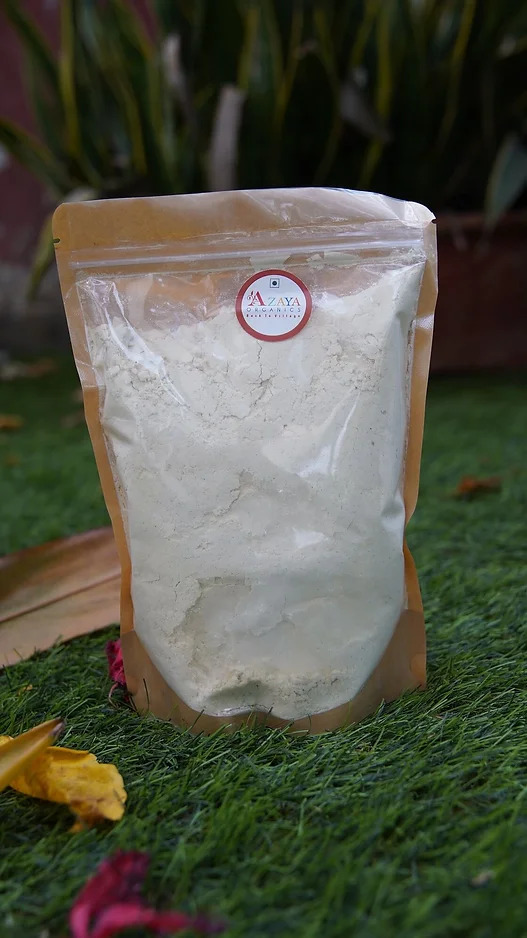
Modern Barley Creations: Culinary Adventures
In today's dynamic culinary landscape, chefs and home cooks alike are reimagining barley in innovative ways. From vibrant salads to grain bowls bursting with flavor, the possibilities are endless, inviting culinary exploration and creativity. And now, with the convenience of purchasing organic atta online, incorporating barley into your cooking routine is easier than ever.
Conclusion: Embracing Barley Atta for a Flavorful Journey
Now we have known so much about the dynamic grain Whether revisiting beloved classics or experimenting with modern twists, barley atta promises to enhance our cooking experiences and nourish our bodies. So why not embark on this flavorful journey and discover the magic of Azaya Barley Atta.
#barley atta#barley#nutritional atta#Azaya barley atta#organic atta#organic products#organic atta online
1 note
·
View note
Text
Exploring Gluten-Free Choices and Raising Celiac Awareness: Delicious Wheat Alternatives and Quinoa Dishes
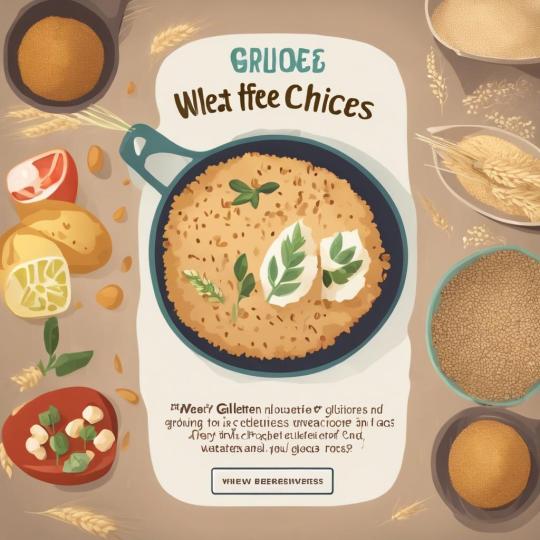
In recent years, gluten-free diets and celiac awareness have gained significant attention. Whether you have a gluten sensitivity or are simply looking for healthier alternatives, incorporating gluten-free choices into your meal plan can open up a world of culinary exploration. In this article, we will delve into the fascinating world of gluten-free options, highlighting wheat alternatives and mouthwatering quinoa dishes. Read on to discover how you can enjoy a gluten-free lifestyle without compromising on taste or nutrition.
Section 1: Understanding Gluten and Celiac Disease
Before we dive into the gluten-free choices, let's take a moment to understand the term 'gluten' and its impact on those with celiac disease. Gluten is a protein found in wheat, barley, and rye, which can trigger an immune response in individuals with celiac disease. This autoimmune disorder affects about 1% of the global population and necessitates a lifelong gluten-free diet to avoid digestive discomfort and potential long-term health complications.
Section 2: Exploring Gluten-Free Choices
2.1 Gluten-Free Grains and Flours:
Fortunately, there are abundant gluten-free grains and flours that can be seamlessly incorporated into your meals. These include:
a) Quinoa:
This versatile superfood is a staple in gluten-free diets. Rich in protein, fiber, and essential minerals, quinoa is not only highly nutritious but also adds a delightful nutty flavor to dishes. Explore quinoa salads, pilafs, and even quinoa-based desserts for a satisfying and gluten-free alternative.
b) Brown Rice:
Brown rice, another gluten-free grain, is incredibly versatile and pairs well with a variety of flavors. From rice bowls and stir-fries to risottos and sushi, the possibilities are endless. Opt for the whole grain version for added fiber and nutrients.
c) Buckwheat:
Contrary to its name, buckwheat is not related to wheat and is naturally gluten-free. Its earthy taste makes it a fantastic substitute for wheat in soba noodles, pancakes, and even gluten-free bread.
d) Almond Flour:
Almond flour is a popular gluten-free alternative that adds a delightful nutty flavor to your baked goods. Rich in healthy fats and low in carbs, it lends a moist and tender texture to your creations.
2.2 Wheat Alternatives for Baking:
If you are an avid baker, the absence of wheat may seem daunting at first. Rest assured, you can still indulge in your favorite baked treats using these wheat alternatives:
a) Gluten-Free Flour Blends:
Look for ready-made gluten-free flour blends specially formulated for baking. These blends typically consist of a mix of alternative flours like rice flour, tapioca starch, and potato starch. Experiment with these blends to determine your favored ratios for different recipes.
b) Oat Flour:
Oats are naturally gluten-free; however, cross-contamination during processing is common. To ensure your oats are truly gluten-free, choose certified gluten-free oat flour. This flour adds a wholesome and slightly nutty flavor to your baked goods.
c) Coconut Flour:
Coconut flour is an excellent choice for gluten-free, high-fiber baking. It absorbs more moisture than traditional flour, so make sure to adjust your recipe by adding extra liquid ingredients.
Section 3: Celiac Awareness and Advocacy
Beyond individual dietary choices, spreading awareness about celiac disease can make a significant impact. Here are a few ways to support celiac awareness:
a) Participate in Celiac Disease Awareness Month:
Every May, individuals, organizations, and communities come together to raise awareness about celiac disease. Join local events, share information on social media, and engage in conversations to educate others about the disease.
b) Support Celiac Associations:
Numerous associations and nonprofits work tirelessly to support individuals with celiac disease. Consider donating, volunteering, or promoting their activities to contribute to their important work.
Section 4: Conclusion
In summary, embracing a gluten-free lifestyle does not mean compromising on taste or nutrition. By familiarizing yourself with the vast array of gluten-free grains, flours, and wheat alternatives, you can unlock a world of delicious culinary possibilities. From quinoa dishes to creative baking endeavors using gluten-free flour blends, the options are limitless. Additionally, raising awareness and supporting celiac organizations can help foster a more inclusive and understanding community. So, whether you are personally affected by celiac disease or simply exploring gluten-free choices, seize the opportunity to enjoy a diverse and satisfying gluten-free lifestyle.
Tags:
1) Gluten-Free Choices
2) Celiac Awareness
3) Wheat Alternatives
4) Quinoa Dishe
Discover a new era of wellness with Puravive's Natural Weight Loss Supplement. Our carefully crafted formula supports your weight loss goals naturally and effectively. Harness the power of nature to achieve your dream body. Learn more on the Puravive Natural Weight Loss Supplement Product Page.
Read the full article
0 notes
Text
Barley vs Brown Rice: Choosing the Right Grain for Your Health
In today's health-conscious era, an increasing number of people are prioritising their well-being. With a growing awareness of the importance of a healthy lifestyle, individuals are making mindful choices about their diet, exercise, and overall wellness. Mahalaxmi Malt products Private Limited offers a variety of healthy products such as Malted milk food, Barley Malt Powder, Malt Based Food, Barley Malt Extract and malted milk food in India. We have received many queries regarding the health benefits of barley and which is better - barley or brown rice.When it comes to grains, barley and brown rice are two nutritious options that often find their way into our meals and offer a variety of health benefits. In today’s blog, we’ll try to help you resolve your confusion.

Nutritional Value:
Barley:
Barley is a rich source of dietary fiber, which aids in digestion and promotes a feeling of fullness.
It contains essential minerals like manganese, selenium, and phosphorus.
Barley is high in vitamins, including B vitamins like niacin, thiamine, and folate.
It has a lower glycemic index compared to brown rice, making it a better choice for managing blood sugar levels.
Brown Rice:
Brown rice is a whole grain, which means it contains all parts of the grain – the bran, germ, and endosperm. This preserves its nutritional value.
Brown rice is a good source of magnesium, phosphorus, selenium, thiamine, and niacin.
It is high in fiber, promoting digestive health and reducing the risk of constipation.
Brown rice is gluten-free, making it suitable for individuals with gluten sensitivities.
Health Benefits:
Barley:
Barley contains beta-glucans, a type of soluble fiber that helps lower cholesterol levels, reducing the risk of heart disease.
Its fiber content aids in weight management by promoting satiety and reducing overall calorie intake.
Barley's antioxidants contribute to a stronger immune system and protect the body against free radicals.
Brown Rice:
Brown rice supports heart health due to its high fiber and magnesium content, which regulate blood pressure and lower cholesterol levels.
The fiber in brown rice helps maintain stable blood sugar levels, making it an excellent choice for individuals with diabetes.
Brown rice contains beneficial antioxidants that protect the body from oxidative stress and inflammation.
Incorporating Barley and Brown Rice into Your Diet:
Barley:
Barley can be enjoyed in soups, stews, and salads for added texture and nutrients.
Barley can be cooked and mixed with vegetables and lean proteins for a wholesome meal.
Barley flour can be used in baking for a nutritious twist in pancakes, muffins, and bread.
Brown Rice:
Brown rice can be substituted with white rice in stir-fries, curries, and pilafs for a healthier option.
Brown rice can be combined with beans, vegetables, and spices for a flavorful and nutritious vegetarian dish.
Brown rice flour can be used in gluten-free baking for cakes, cookies, and other treats.
Conclusion:
Both barley and brown rice offer unique nutritional profiles and health benefits. The choice between the two ultimately depends on your dietary preferences and health goals. Incorporating a variety of whole grains like barley and brown rice into your diet can contribute significantly to your overall health and well-being. Experiment with different recipes to find delicious ways to enjoy these nutritious grains and make them a staple in your balanced diet. For more info - Visit Mahalaxmi Malt Product Private Limited.
For more information about: malted milk food in India Please visit at https://www.mahalaxmimaltextract.com/
#liquid malt extract#malt extract powder#malted barley powder manufacturers#barley malt powder#barley malt extract#malt extract powder manufacturer#barley malt extract manufacturers#malt extract liquid#malt extract#barley malt flour
0 notes
Text
Super Delicious & Gluten-Free Meal Guide, Recipe Post #467: Gluten-Free Quinoa and Brussels Sprout Pilaf
Being gluten free is the practice of avoiding foods that contain gluten, a type of protein found in wheat, barley and rye. Going gluten-free doesn’t mean having to sacrifice flavor or nutrition; there are many delicious food options that are naturally gluten-free, such as fruits, vegetables, meat, fish, rice, legumes, nuts, seeds, and many types of dairy. It is important to remember that even if…
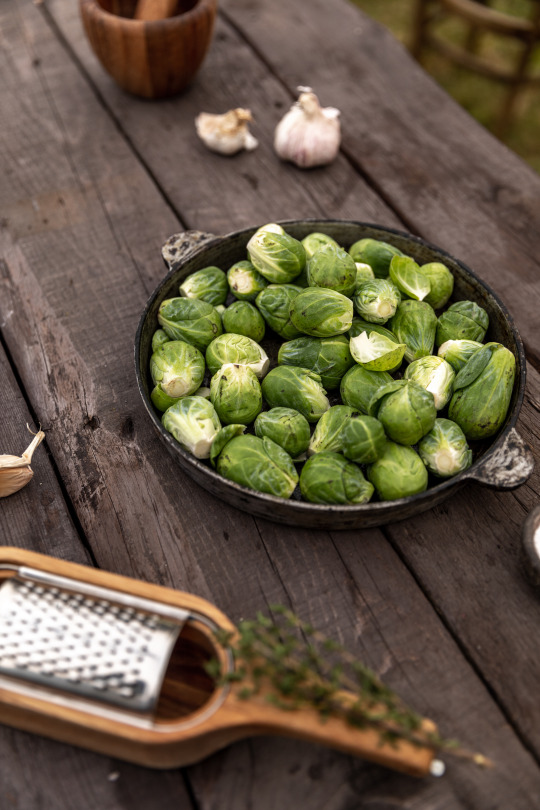
View On WordPress
0 notes
Text
Instant Pot Wild Rice and Barley Pilaf Recipe
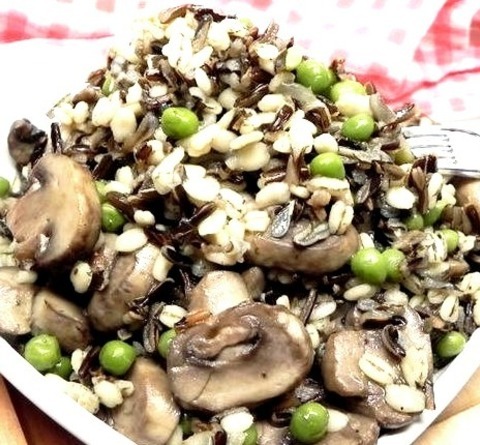
This hearty wild rice and barley pilaf can be quickly made in an Instant Pot® for busy weeknights. It pairs well with any pork or chicken main dish.
0 notes
Text
Barley Flakes Market Growth Insights, Latest Trends, Industry Outlook, Development Strategies, and Forecast to 2030

Barley flakes are a type of cereal grain that has been flattened and rolled into thin, flattened pieces. They are similar to other types of rolled oats or oat flakes and are often used as a breakfast cereal or in baking. Barley flakes are a good source of dietary fiber, protein, and several important vitamins and minerals, such as iron and B vitamins. They also contain antioxidants and plant compounds that may have various health benefits. Barley flakes can be cooked similarly to other oat flakes or used as a substitute in recipes calling for oats or other grains. They can be added to breakfast bowls, used in granola bars, or even used as a base for savory dishes such as grain salads or pilafs.
The global barley flakes market has been growing steadily over the years due to the increasing demand for healthy and nutritious breakfast options. Barley flakes are becoming more popular as people become more health-conscious and seek alternatives to traditional breakfast cereals. The market is driven by the increasing demand for natural and organic foods, as well as the rising popularity of gluten-free products. Barley flakes are a great gluten-free option for those who are sensitive to gluten or have celiac disease. The market is also driven by the increasing demand for convenience foods. Barley flakes are easy to prepare and can be used in a variety of recipes, making them a popular choice for busy consumers.
Key companies covered as a part of this study include King Arthur Flour Company, Inc., Honeyville, Inc., Nestlé, Kellogg, Cereal Food Manufacturing Company, Bob’s Red Mill Natural Food, Rude Health, Naturally Yours, Gaurang Foods, VLS Foods Pvt. Ltd., VEE GREEN ORGANIC LIFE CARE PRIVATE LIMITED, Nith River Milling, and Hodmedod's British Pulses & Grains.
There are several benefits associated with the barley flakes market, including:
1. Nutritional benefits: Barley flakes are a great source of dietary fiber, protein, vitamins, and minerals such as iron and B vitamins. They also contain antioxidants and plant compounds that may have various health benefits.
2. Gluten-free option: Barley flakes are naturally gluten-free, making them a great option for those with gluten intolerance or celiac disease.
3. Versatility: Barley flakes can be used in a variety of recipes, including breakfast cereals, granola bars, and savory dishes such as grain salads or pilafs.
4. Convenience: Barley flakes are easy to prepare and can be cooked similarly to other oat flakes, making them a convenient option for busy consumers.
5. Sustainable: Barley is a crop that requires less water and resources to grow than other cereal grains, making it a more sustainable option for food production.
6. Increasing demand for natural and organic foods: As consumers become more health-conscious, there is an increasing demand for natural and organic foods, and barley flakes are a great option for those seeking healthier breakfast options.
7. Growing market: The global barley flakes market has been growing steadily in recent years, driven by factors such as increasing consumer demand for healthy and natural foods, rising awareness of the health benefits of barley flakes, and the growing popularity of gluten-free and organic foods.
The demand for barley flakes has been increasing steadily in recent years, driven by a growing trend towards healthier and more natural food products. Barley flakes are a popular breakfast cereal and are also used as an ingredient in various food and beverage products, including bread, crackers, and beverages.
One of the main factors driving the demand for barley flakes is their nutritional value. Barley is a whole grain that is high in fiber, protein, and various vitamins and minerals. As consumers become more health-conscious and seek out foods that offer health benefits, the demand for barley flakes is expected to continue to grow.
Another factor contributing to the demand for barley flakes is their versatility as an ingredient. Barley flakes can be used in a variety of different food products and can provide a unique texture and flavor. For example, barley flakes can be used in baked goods as a substitute for wheat flour or can be added to soups and stews to provide a hearty and nutritious base.
The growing trend towards plant-based diets is also contributing to the demand for barley flakes. Barley flakes are naturally gluten-free and can be used as a substitute for traditional wheat-based products, making them a popular choice for consumers with gluten sensitivities or celiac disease.
0 notes